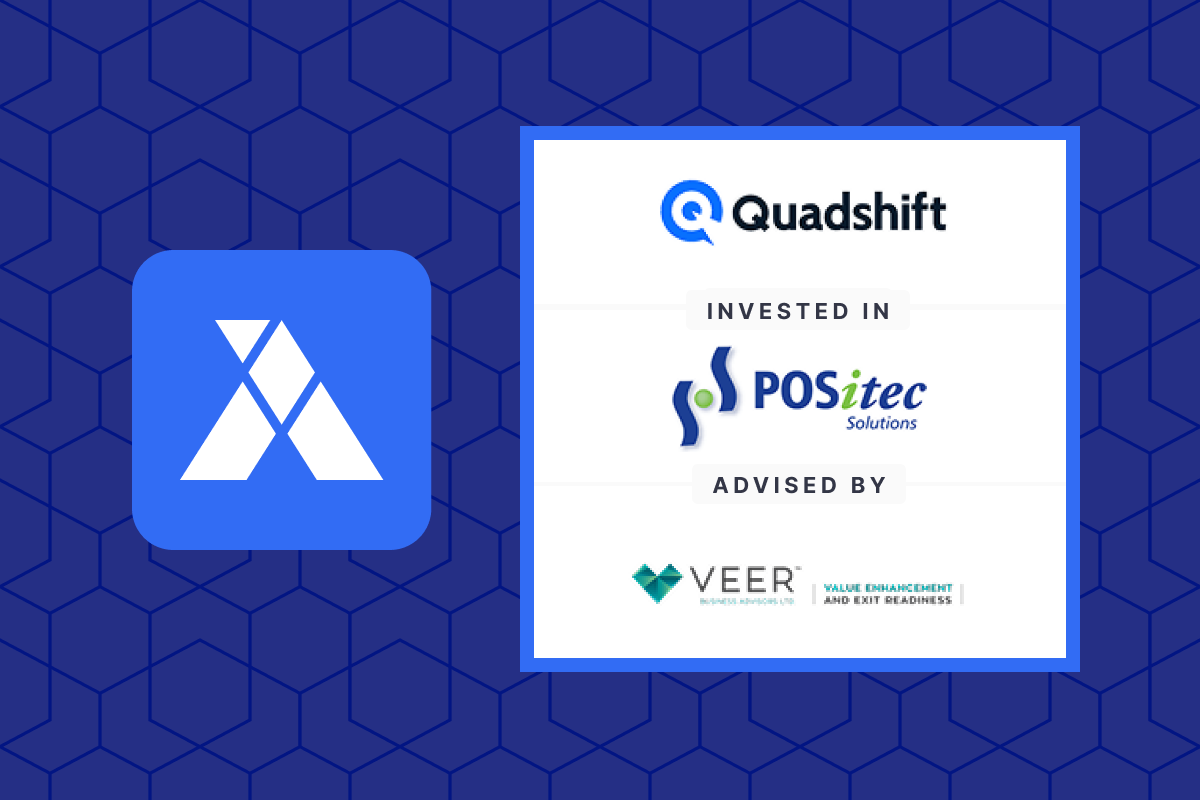
Case Study: Quadshift Acquires POSitec Solutions Advised by Veer Business Advisors
“We’re thrilled to welcome Positec into the Quadshift family. Positec is a market leader in pharmacy retail POS software in…

To think of Carl Gould as simply a “business coach” would be an understatement.
He has written 7 books, given countless speeches to the Entrepreneurs’ Organization, Vistage, YPO, various industry associations and helped operationalize and scale thousands of business in his 26 year career.
In 2002, Carl founded 7 Stage Advisors, an advisory group that specializes in the acceleration and sustainment of business growth. 7 Stage Advisors joined Axial in 2014 and since then have met multiple companies, including WeatherWorks and Panorama Environmental, who chose the firm to help them with their growth strategy.
Read on to learn about how Carl and his team are addressing small business owners’ biggest growth challenges, and why CEOs should look for help when approaching major business milestones.
What’s one of the biggest challenges for you in your role as a growth advisor to businesses?
The largest hurdle is instilling the behavioral change and the discipline that is needed in order for the company to grow and get to the next level. Every major stage of growth in a business requires a paradigm shift in how you run the business. Getting the leadership team to accept that and then sustain that discipline is really the hardest part.
The reason it’s difficult is that we’re asking them to do something they say they want to do, but which is challenging for most owners to put into action. They know what they want to achieve. They know the endpoint. We often hear “I want to be a $50MM company,” “I want to franchise,” “I want to sell,” but they’re unsure about how to get there, and may lack bandwidth within the company to get there.
How does your firm help businesses navigate this challenge?
We recently performed an analysis on industry pricing standards for one of our manufacturing clients. In doing so, we refreshed the positioning of the business based on our modeling of the “ideal customer,” which was someone who is willing to pay more, more frequently, when given a reason to do so. This allowed the business to increase its prices by 10% in the first year and 8% the following year.
It often takes years for owners to navigate big changes like this, but with an advisor, that learning curve is shortened. Every one of our advisors has either bought, sold, launched, managed, or run a business as big if not bigger than the client company they are advising. We know the road ahead. We know exactly how to get there. We can help them anticipate what the upcoming challenges are. In a sense, we are a time machine for our clients.

Carl moderating a panel discussion with Barbara Corcoran from ‘Shark Tank’
What indicators tell a CEO or CFO that it’s time to seek out help for growing their business?
When it comes to growth, sequence isn’t quite everything — but it’s almost everything. It’s not enough to do the right things. You have to do the right things in the right order. You can really hurt yourself if you put systems (or controls) in too early or too late.
As a business grows, there are a couple of milestone numbers. The way you run your business at $5MM vs. $20mm vs. $50mm vs. $100mm in revenue is vastly different because the dynamics of your company change as the business grows. How you need to run it and what you need to be focusing on changes as you hit these milestones.
We recently worked with a project management business that soared past the $50MM mark in only three short years. At that stage, it was time to institute company-wide systems that would allow for better data analysis. By transitioning to a singular project management software and by fully integrating CRM and accounting softwares, the business went from entrepreneurial management to professional management. We also recruited and hired a full-time CFO, installed company-wide metrics (with accompanying dashboards for each department), and implemented a reporting structure that allowed the management team to track the operations in real time. Instead of waiting until the end of the week or the end of the month to see how the company was performing, we now know by 11:00am daily!
What level of transparency does this kind of strategic partnership require?
Part of our goal is to uncover new things that the business owner might not even be aware of. Pleasantly, our clients have always been very, very open. They’re very transparent. Before we even get started, we typically know everything about the business as far as financials, legal, and compliance. There’s rarely anything we don’t know about.
It’s not about us, it’s about them. We can’t achieve a goal until we have a matching mindset and a good understanding of the business landscape.
What’s the biggest piece of advice that you have for a business owner who is seeking a transaction, whether it be a year from now or five years from now?
Make sure you are fully leveraging your management team and that the team is ready to run the business without your participation as the owner. Every business needs a Director of Operations, a Marketing Director, and a VP of Sales so that lead generation, the conversion of leads to sales, and product/service fulfillment can happen day in, day out, without the need for the owner to be involved. That will considerably and positively impact your business’ valuation; and your ability to negotiate a better deal with a potential buyer. No matter if it’s a management buyout, a merger, a liquidity event, or selling outright, the management team needs to be in place and fully functioning.
Because they’re so emotionally tied to the business and they have such strong emotions about the business, most owners think their managers are ready. The reality is that they still exert a lot of influence on the business itself. As a result, the management team is not really ready to fully take over.
What impact does networking play in your ability to do business? How has Axial helped with that?
We’ve been very impressed with Axial’s ability to bring together the fragmented middle market. The facilitated networking especially at the events and through email introductions has been a great way to instantly infuse trust between members.
What was the first job that you ever had?
The first job I ever had I got a job sweeping the floor of a pallet factory when I was nine years old. (I don’t mean to age myself, but back then the pay was a dollar an hour.) On the last week of the summer when I was working there, I caught the end of the broom on a doorway while I was sweeping and it broke. I asked my boss not to pay me for that week because I felt bad that I broke the broom. I think that’s indicative of the sense of responsibility I feel for my work, even now.
